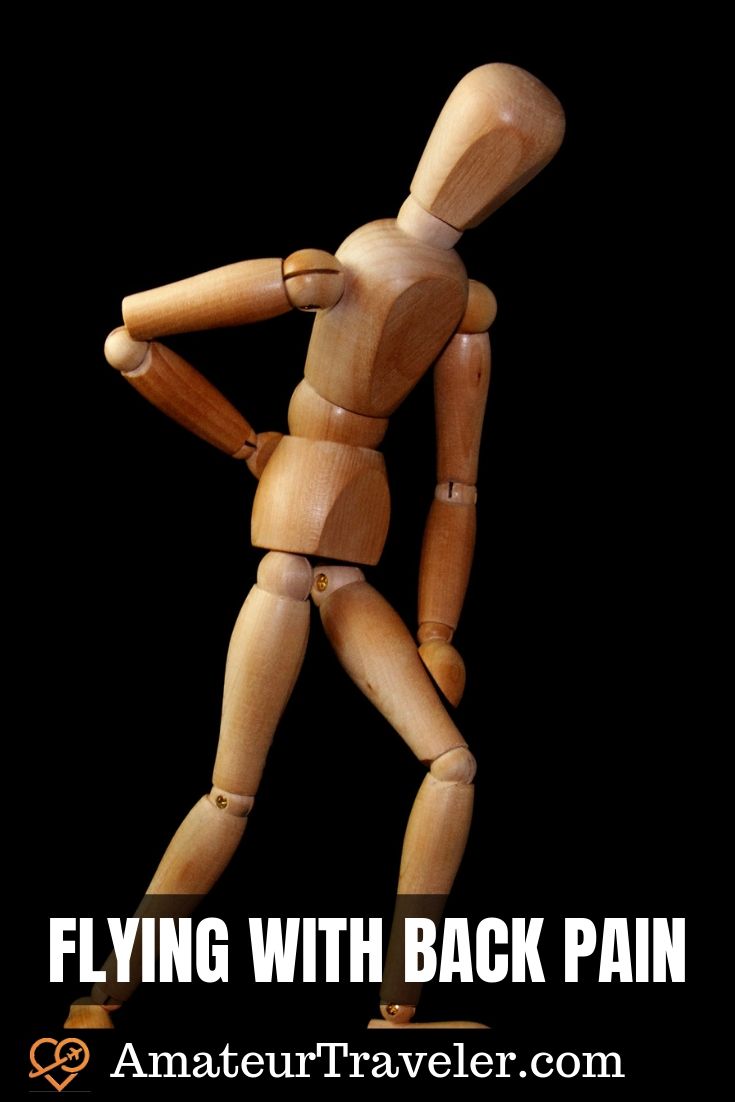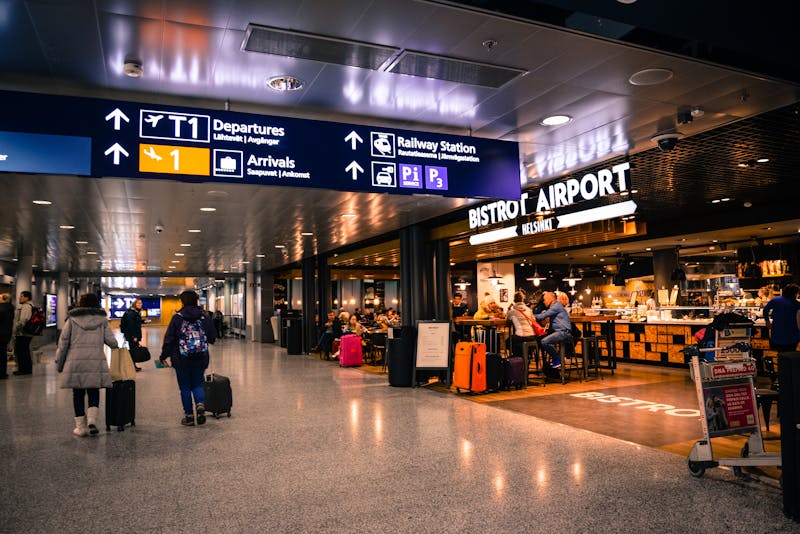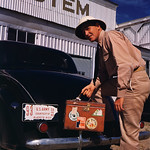
Flying on a plane, especially on a long-haul flight takes a toll on your body. Airplane seats have little support, are generally uncomfortable, and legroom is lacking at best. It is hard to stretch out your legs, find a comfortable position, and you cannot constantly get up to walk around or stretch for most of the flight.
Furthermore, when you are traveling, you drink much less water than normal, you are not making the healthiest food choices, and your time to stretch and workout is limited as well. With this combination of issues, your back is going to feel it. Even if you typically do not suffer from back pain or have any back-related issues, it is still common to develop an achy back during place travel.
Even though back pain during travel is such a common issue, there are quite a few things you can do to prevent or lessen the effects of plane travel on your back. Depending on how bad your back pain is, if you suffer from chronic back pain, or just develop it when you are seated uncomfortably for too long, there are solutions to help all levels of back pain.
In this article, we will explore some of the top traveler tips for keeping your back healthy during plane travel. Taking some time to look after yourself a bit more when you are traveling can do wonders for your health and state of mind. Traveling is stressful and can be a pain, literally. But easy solutions can be employed to make your experience much more enjoyable.
Before Your Flight
You should not wait until you are feeling aches and pains in your back to begin trying to fix it. Getting ahead of your pain and aiming to prevent it from happening in the first place is the key. Below are a few simple ways to help prevent back pain from forming before you even get on your flight.
Stretch
Stretching out your back, neck, butt, and leg muscles before a flight helps loosen those muscles, work out any tightness, and prevent pain. All of your muscles and body are connected, so making sure to stretch all the muscles in the surrounding area is important.
You will want to stretch your neck, your upper, middle, and lower back. Less obvious stretches include stretching your glutes, hamstrings, quads, hips, and inner thighs. Tight muscles in these areas can contribute to back pain, especially lower back pain after airplane travel. Making sure these large groups of muscles are loose will help keep your back in check.
When you are at the airport and through security, find a quiet spot where you can take some time to complete your stretches. Even taking ten minutes to stretch out these areas is all you need to get your body feeling better and more relaxed. However, if you have fifteen to twenty minutes to stretch even more and deeper, that is always the best course of action.
- Buy Travel Insurance
- Search for Great Tours HERE
- Get a Car Rental
- Book Your Accommodation HERE

Hydrate
Staying hydrated before your flight by drinking plenty of water is critical to preventing back pain. When you are dehydrated, you are more prone to developing aches and pains and feeling the effects of stress. When your body does not get enough water, a common response to the lack of water is pain. Your back muscles can spasm when you are dehydrated. When this happens, your posture is also more likely to distort.
If you are sitting in an uncomfortable plane seat for a long period, cannot move around much, and your body is dehydrated, you have created the perfect environment for developing back pain.
In the hours before your flight, make sure you are drinking lots of plain water. You can also consume foods with high water content to help with hydration. Foods like cucumbers, watermelon, grapes, and tomatoes contain a lot of water. You can begin to limit your water intake when it gets closer to your boarding time, so you do not have to run to the bathroom on the plane all the time.
Walk
Making sure you walk and get in some steps before a flight, especially a long-haul flight, may help reduce back pain as well. You will be sitting in your seat for many hours once on the plane without the ability to walk around much. The extent of your walking will likely be making your way up the aisle to the bathroom.
When you are at the airport, take a stroll around the airport for thirty minutes or longer if possible. You can grab a healthy snack or meal at the other end of the terminal, walk around some of the shops, or simply walk around the halls and people watch. Getting your legs moving and your blood flowing is great for your body and back.
Take Your Medication
If you suffer from chronic back pain, you have likely been to a doctor to address the issue. If you have been given pain medication to help with your back pain, make sure you are taking it as prescribed to stop the pain or manage the pain before it begins.
During Your Flight
When you are on your flight, there are things you can do to help pain as well and stay as comfortable as possible. Being on the plane in your seat is going to be the meat of your travel, so make sure you are giving your body and back attention the entire flight.
Stretch
You will want to make sure you stretch on your flight if you will be on the plane for a longer time. You can do simple stretches for your upper back and lower back right from your seat, so you do not have to stand up and disturb the people sitting next to you.
Stretching during your flight can release any tension and tightness you begin to develop from sitting in your seat or a long time in an uncomfortable position.
Walk and Stand
A few times during your flight, you will want to get up and walk around a little or stand. A combination of both is the best plan. Standing up will allow your legs and back to gently release and stretch. It will get the blood flowing to your limbs and the change in position can simply feel wonderful after sitting for too long.
Walking will also get your legs moving and stretching, which can make your back feel less stiff and tight. You can stand in front of your seat if you have enough room. If not, stand in the aisle next to your row or perhaps stand in the back of the plane by the bathrooms if you are allowed.
You can also get up and move around the plane if you are comfortable doing so. You can walk up and down the aisle once or twice and then go back to your seat. If you feel awkward doing that, you can walk to the bathroom, freshen up or use the toilet, and then go back to your seat after.
Keep Space Clear for Your Feet
Ensuring there is room for your legs and feet under the seat in front of you is a great way to keep you more comfortable on your flight. If you do not have a bag or backpack stowed under the seat in front of you, you can stretch out your legs under the seat, so you are not scrunched up.
Try to take everything you will need during your flight out of your bag and place in the pouch in front of you. You can keep your bag, backpack, or purse in the overhead storage. If you need something you can get it at some point during the flight.
Bring Lumbar Support
If you have lower back issues, bringing a lumber pillow will be essential to keep you comfortable and reduce lower back pain during the flight. Plane seats typically have no lumbar support and your lower back will the unsupported and strained for the whole flight if you do not bring your own lumbar pillow.
[amazon_link asins=’B072K59NYZ’ template=’ProductAd’ store=’chrischrissho-20′ marketplace=’US’ link_id=’ 63ea0a88-480b-4496-85e3-cfbb0f085bfe’]
The simple act of having something supportive behind your low back can make all the difference in your comfort level for the duration of the flight.
After Your Flight
There are a few things you can do after your flight to allow your body and back to recover and relax again. Let’s take a look at what those options are.
Walk
After your long flight, the best thing you can do walk around as much as possible. Get those legs moving and that blood flowing to your legs. It will feel amazing to walk and stretch those legs, which will also help release tension and stiffness from your back.
It is also the best way to explore your vacation destination when you first get there! It makes walking and moving around fun and exciting.
Take a Warm Shower or Bath
If you have some time, taking a warm shower or bath will also help relax your sore muscles and relax your body and mind. You can settle into your hotel room and freshen up after your flight, so you are killing two birds with one stone.
After your shower or bath, you will feel refreshed, less sore, and ready to get out and explore the city or resort you are staying at with newfound vigor.
Get a Massage
You may not have time to do a massage right away, but if you can book a massage at your hotel for the same day you get to your destination, but later in the day, do it. It will feel wonderful and your massage therapist can relieve tension and knots you accumulated from your flight.
When you get home from your trip, you can also see a chiropractor to help get your back and spine in its proper alignment again.
Traveling can be a stressful, tiresome, and uncomfortable experience if you are not prepared. There are enough things that can go wrong with hotels, canceled or delayed flights, and forgetting to pack an essential item for your trip.
You should not be worried about if your back is going to act up and become extremely painful during the course of your flight and travel day. Staying prepared and doing all of the right things can reduce or eliminate pain and keep you sane.
Staying hydrated, stretching, walking around, and keeping important medication close by can all have a major positive impact on how you feel during your flight. Your back health is so important, and you want to make it through your flight comfortably and be healthy for when you get to your final destination.
If you employ all or some of the tips we discussed above, you will be well on your way to keeping your back healthy during plane travel.
Leave a Reply
Tags: article, travel health




 10 Tips for Taking a Dog on a Plane
10 Tips for Taking a Dog on a Plane 15 Tips for Flying With Kids
15 Tips for Flying With Kids 8 Tips for Traveling with a Bad Back
8 Tips for Traveling with a Bad Back How to Sleep on a Plane – Gear that Helps
How to Sleep on a Plane – Gear that Helps
